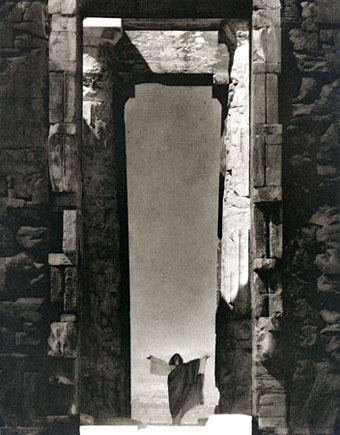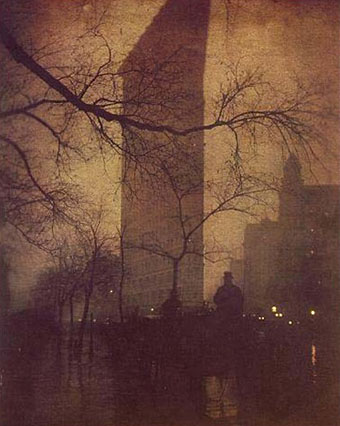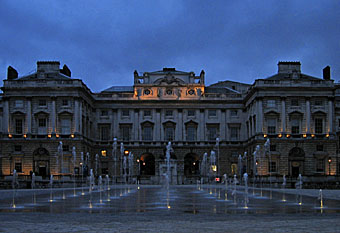Some arcades via Wikipedia.
The Passage, Nevsky Avenue, Saint Petersburg.
The Galleria Vittorio Emanuele II, Milan.
Leadenhall Market, London.
Gum department store, Moscow.
Previously on { feuilleton }
• Passages
A journal by artist and designer John Coulthart.
Architecture
Photography by Edward Steichen (1879–1973).

Isadora Duncan at the Portal of the Parthenon, Athens (1920).

The Flatiron Building, New York (1905).
Previously on { feuilleton }
• Karel Plicka’s views of Prague
• Atget’s Paris
The Coliseum by Piranesi #2 (1995).
Fore-Edge Book (2001).
Just two of Abelardo Morell‘s striking photographs.
These are from his Books series. His Alice in Wonderland
tableaux are especially inventive.
Elsewhere on { feuilleton }
• The etching and engraving archive
Part of the Playstation Season, “a partnership between PlayStation and 5 international public arts institutions renowned for an innovative approach to arts programming — BALTIC, the V&A, ENO, Sadler’s Wells and the BFI.”
A luminous interactive installation will transform the V&A’s John Madejski Garden this winter. Volume is a sculpture of light and sound, an array of light columns positioned dramatically in the centre of the garden.
Volume responds spectacularly to human movement, creating a series of audio-visual experiences. Step inside and see your actions at play with the energy fields throughout the space, triggering a brilliant display of light and sound.
The piece is a collaboration between lighting designers United Visual Artists (UVA) and Robert Del Naja (alias 3D) of Massive Attack and his long-term co-writer Neil Davidge (as part of their music production company, one point six).
Looks like a cross between Jenny Holzer‘s vertical signs and the Edmond J Safra Fountain Court at Somerset House which I had the opportunity to photograph one gloomy evening back in May (below). And speaking of that square, it’s been turned into an ice rink again for the winter.

The photorealist urban landscape paintings of Richard Estes.
Bus Reflections (1972).
Café Express (1975).